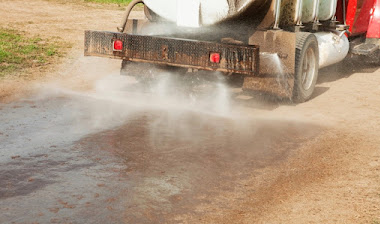This Artist Creates Tiny Anti-Fracking Scenes with Vintage Figurines and Postcards
February 22, 2014Exxon CEO joins lawsuit against fracking infrastructure
February 25, 2014If you get your news from the major mainstream news outlets, you may have missed this one:
Toxic chemicals may be triggering the recent increases in neurodevelopmental disabilities among children—such as autism, attention-deficit hyperactivity disorder, and dyslexia—according to a new study from Harvard School of Public Health (HSPH) and Icahn School of Medicine at Mount Sinai. The researchers say a new global prevention strategy to control the use of these substances is urgently needed.
Published in Lancet Neurology this week, the study adds to the number of chemicals known to be toxic to developing brains:
In 2006, we did a systematic review and identified five industrial chemicals as developmental neurotoxicants: lead, methylmercury, polychlorinated biphenyls, arsenic, and toluene. Since 2006, epidemiological studies have documented six additional developmental neurotoxicants—manganese, fluoride, chlorpyrifos, dichlorodiphenyltrichloroethane, tetrachloroethylene, and the polybrominated diphenyl ethers. We postulate that even more neurotoxicants remain undiscovered.
The Environmental Working Group explains why the brains of our children are so vulnerable from exposure to some pretty common chemicals:
- A developing child’s chemical exposures are greater pound-for-pound than those of adults.An immature, porous blood-brain barrier allows greater chemical exposures to the developing brain. Children have lower levels of some chemical-binding proteins, allowing more of a chemical to reach “target organs.”
- A baby’s organs and systems are rapidly developing, and thus are often more vulnerable to damage from chemical exposure.
- Systems that detoxify and excrete industrial chemicals are not fully developed.
- The longer future life span of a child compared to an adult allows more time for adverse effects to arise.



